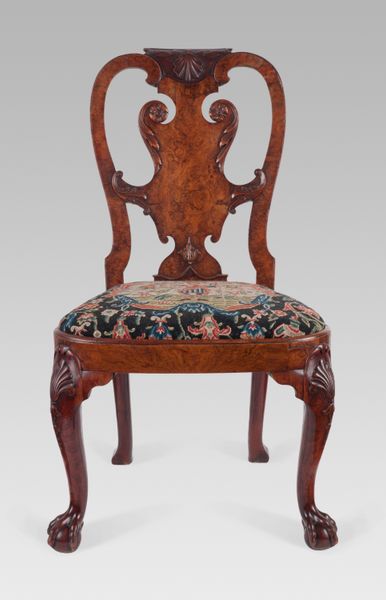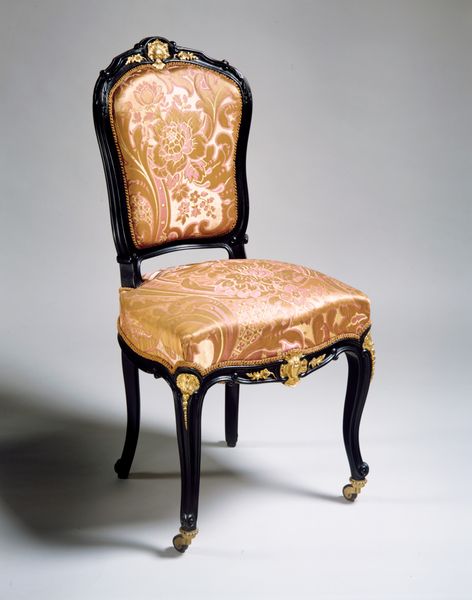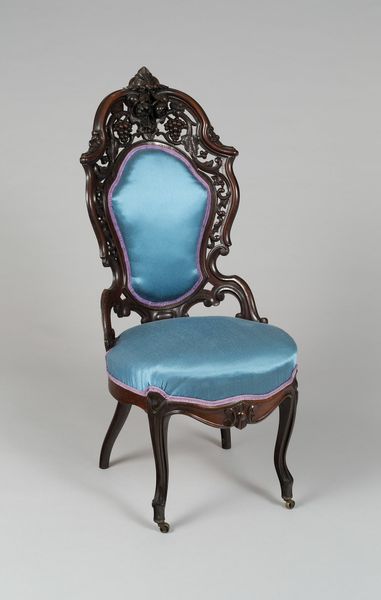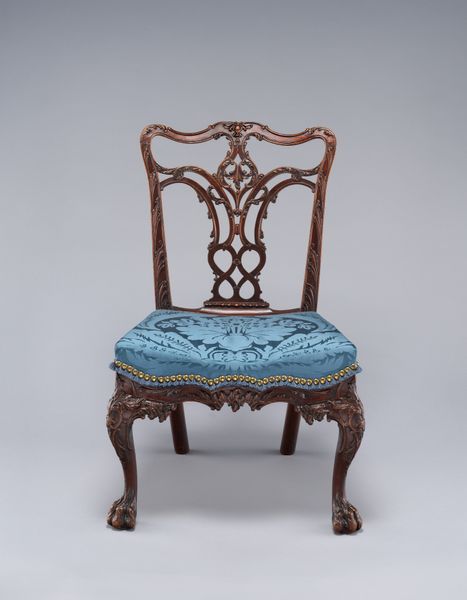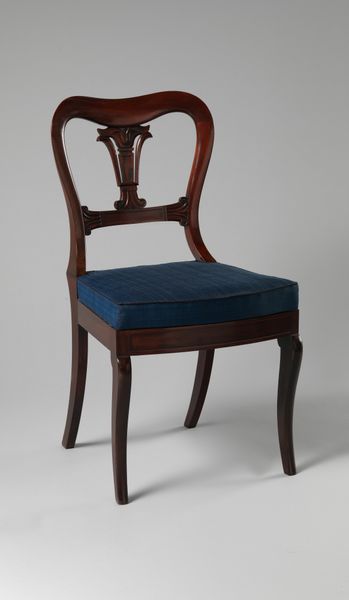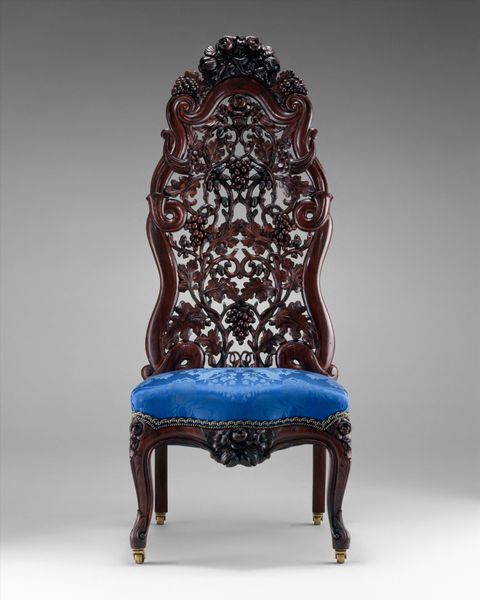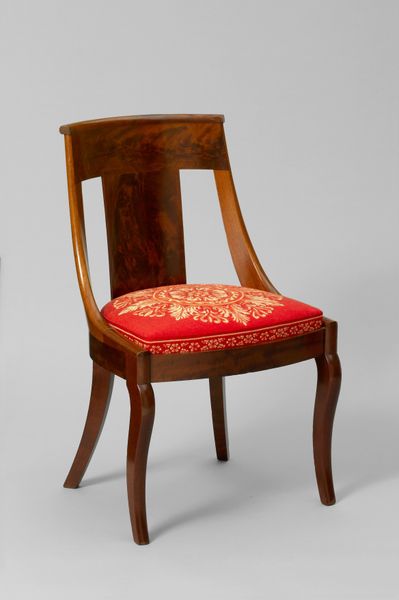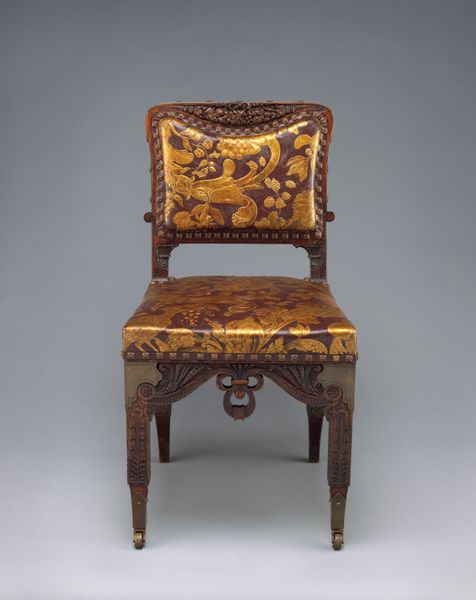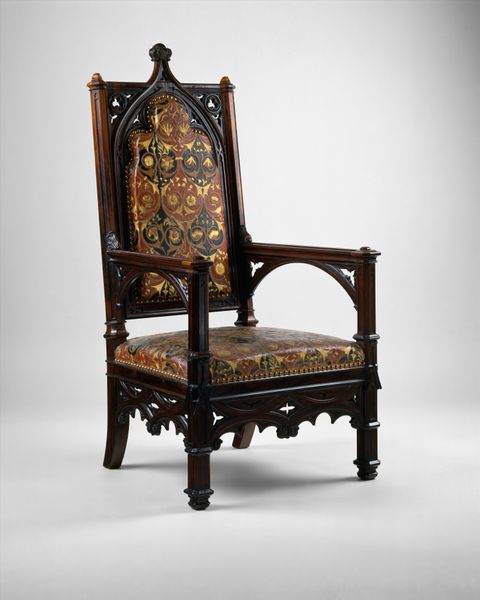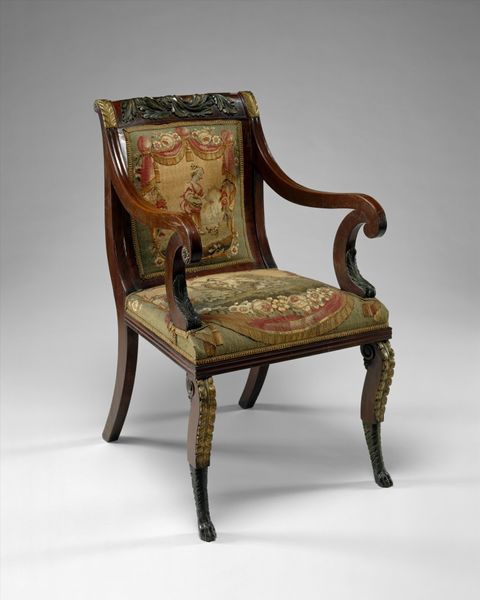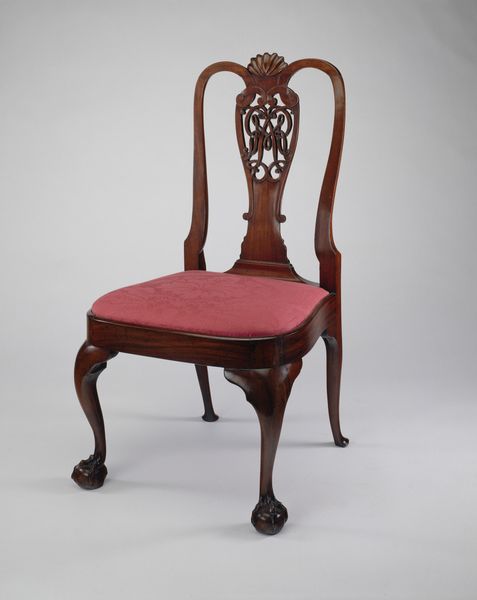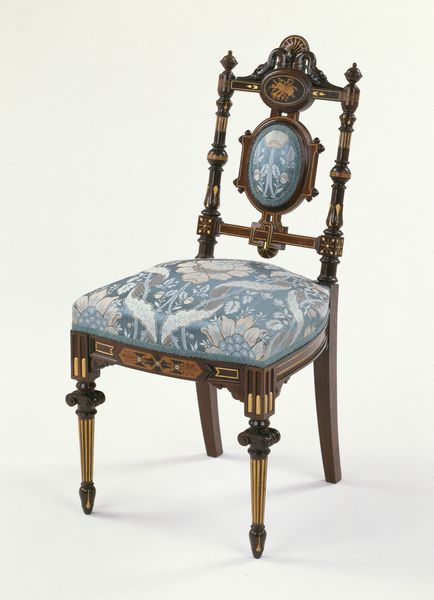
carving, sculpture, wood
#
carving
#
sculpture
#
furniture
#
sculpture
#
united-states
#
wood
Dimensions: 38 1/2 x 19 1/2 x 21 1/2in. (97.8 x 49.5 x 54.6cm)
Copyright: Public Domain
Curator: Welcome. Today, we are looking at a Victorian side chair, dating from around 1860. It was created by the John Henry Belter Factory, and now resides here at the Minneapolis Institute of Art. Editor: Oh, my! The intense, almost aggressive detail hits you immediately. The deeply carved wood, those undulating curves. There's an undeniably sensual quality. Curator: Indeed. Belter's factory was renowned for its laminated rosewood furniture, utilizing techniques to create these very elaborate pierced carvings. It allowed furniture to become, in essence, a form of sculpture. We must remember the burgeoning middle class at this time; owning objects such as this chair conveyed wealth and status. Editor: Notice how the patterned blue fabric emphasizes the chair's curves and sculpted forms? The visual repetition—flowers mirroring flowers—is relentless. The shiny thread woven into the cloth subtly catches the light in a really alluring fashion. Curator: The choice of fabric contributes to the chair's perceived value, speaking volumes about Victorian tastes for opulent decor. Consider where this would have been placed in a Victorian home; not just as a place to sit, but as a symbol of cultural refinement. Editor: The eye is always drawn to extremes, don't you think? It wants to understand how these disparate elements balance each other—that dense ornamentation countered by the fragile curve of a leg. Curator: Yes, and that tension between function and ornament exemplifies the Victorian era's preoccupation with combining practicality with elaborate aesthetics. The chair illustrates the blurring of art and industry during this period. Editor: Overall, it's about luxury—the richness of materials and the evident artistry. Even today, you see that meticulous craftsmanship; despite its wear, that opulence retains the gaze. Curator: Absolutely. Studying objects such as this provides us a direct lens into the values and aspirations of the Victorian middle class and the cultural forces shaping design in 19th-century America. Editor: It's true. And for me, personally, the chair highlights a fascinating dance between texture, light, and form—all adding up to a powerfully compelling statement.
Comments
No comments
Be the first to comment and join the conversation on the ultimate creative platform.
